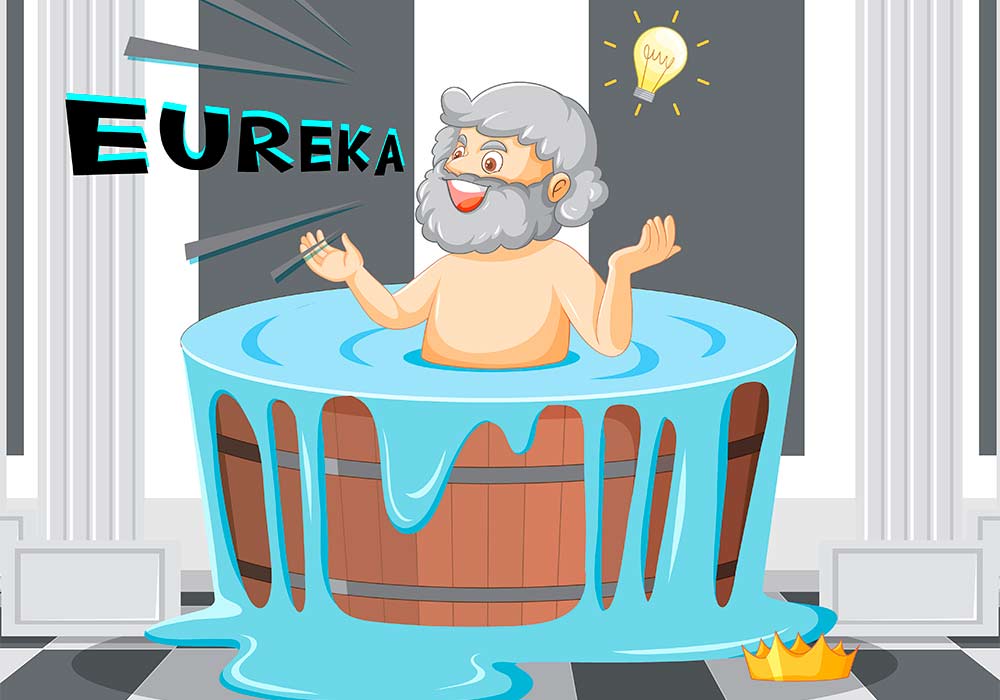Creativity illuminates our minds and transports us beyond the limits of convention. It is a powerful flow of thoughts and inspiration that awakens the spark within us and drives us to create, to imagine and to dream.
Where do good ideas come from? Creativity is nourished by our personal experiences, the memories we cherish and the encounters that have transformed us. But also from moments of distraction or rest. Those days when you don’t look for good ideas, but rather they find you. It is what’s known as the Eureka moment, situations where our mind seems to light up and generate that answer or solution as if it appeared out of nowhere.
What will I read about in this article?
- Mathematical theories that arose from distraction
- Rest as a source of inspiration
- Unleashing creativity
Mathematical theories that emerged from distraction, rest and the Eureka Moment
Archimedes, the renowned Greek mathematician and physicist, rose to fame through his remarkable contributions to the field of science. However, one of the most iconic moments of his life took place in a bathtub. At the time, Archimedes was faced with a seemingly insoluble problem: how to determine whether King Hieron II’s crown was pure gold or whether it contained other, less valuable metals.
It was at that very moment, as he watched the displacement of the water, that a brilliant idea flashed into his mind. He realised that he could measure the volume of the crown by immersing it in water and compare it to the volume of a pure gold object of equal weight.
Upon realising this solution, Archimedes could not contain his excitement and shouted “Eureka” (Greek for “I found it!”). This Eureka moment represents the revelation of a genius, and the manifestation of the connection between science and people’s creative intuition.
History repeats itself. The story goes that Isaac Newton was sitting in the shade of a tree when an apple broke off a branch and hit him on the head. A stroke of luck that led the physicist to develop his theory of gravity. Training, effort and talent are essential when it comes to generating new ideas. But Eureka moments also play a key role.

Rest as a source of inspiration for the Eureka Moment
Surely, it has happened to you: you spend weeks thinking about the same problem, but you are stuck, the answer does not come to your mind. You decide to put it aside for a few days and deal with other matters. You can’t waste any more time on it. Days go by and you forget. Then, suddenly, you’re strolling down the street and there it is! The eureka moment appears in your head: the perfect solution.
In the creative process, inspiration, the crucial instant of epiphany, demands the opposite: forgetfulness, relaxation, restfulness. This is explained by Carlos García-Delgado, author of the book, ‘El yo creativo, una aventura de la mente’ (The creative self, an adventure of the mind). In it, the author asks himself a question he has been studying for a long time: where does creativity reside?
“Training, effort and talent are essential when it comes to generating new ideas. But Eureka moments also play a key role”.
It arises from a tug-of-war between memory and consciousness. To be creative, memory has to be working at full capacity and consciousness in an attenuated state. According to García-Delgado, our memory is not a static archive, like a library. Rather, it’s a place where data is in constant movement, colliding with each other and combining on its own to generate new images or ideas (imagination). Consciousness acts as a screen where the results of these re-combinations appear. It’s not the originator; merely the receiver, the one that projects them.
As the author explains in El País, the key to explaining the creative process is that this agitation of memory is controlled, like a thermostat, by conscious activity. If we want memory to generate ideas or images, consciousness must be attenuated. In other words, rest and distractions are our creative allies. In this way, we won’t be actively projecting and unexpected images will be produced for us.
You know that saying “may the muses catch you at work”? Well, the muses are more likely to catch you idle. That’s why Archimedes was floating in the pool of the baths and Newton was resting under the apple tree. They were in a state of low brain vibrations. It’s no use to exert effort here, but to let the thoughts flow, so that the creative occurrence will appear.
“You have to let the thoughts flow so that the creative occurrence appears”.
Unleashing creativity
The mathematician Henri Poincaré told in his lecture L’invention mathématique (1908) that he used to spend hours in his office trying to solve mathematical problems. But after he had spent all day thinking them over, he’d go for a walk along the seashore and it was then that the solution would come to him.
The disconnection of consciousness, relaxing, thinking about other things and then coming back. That’s the most effective process in order to talk about a method of effective creation. Not so much being on top of the problem in a conscious way, but disconnecting the consciousness so that the memory does its thing.
The question then is: in a world full of rush and anxiety, is there a way to put the mind in that state of maximum creative efficiency? We live in a world of constant bombardment of information, of calls for attention to the conscience, which don’t allow the memory to breathe. Finding moments of relaxation, boredom and rest will be essential to let the imagination and creativity work in peace.
Sources:


